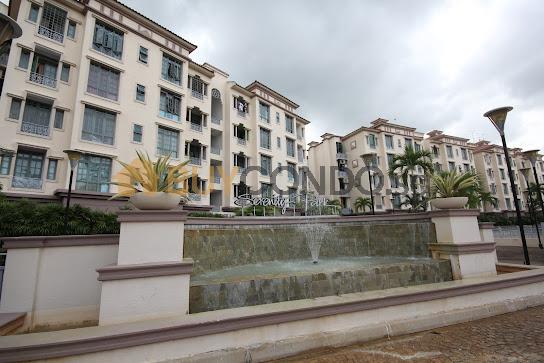What to Expect for a Property Handover at the End of Lease, it’s essential to understand the property handover process to ensure a smooth transition. The handover involves various aspects, including property inspections, understanding tenant responsibilities, and securing the return of your security deposit. By familiarizing yourself with these key elements, you can navigate the handover process with confidence and avoid any disputes with your landlord.

During the handover, you will need to assess the condition of the property, answer any inquiries from the landlord, and address any necessary repairs or cleaning. It’s crucial to have a clear understanding of your obligations and rights as a tenant to ensure a fair and satisfactory handover.
Key Takeaways:
- Understanding the property handover process is crucial for a smooth transition at the end of your lease.
- Property inspections play a vital role in assessing the condition of the property and addressing any necessary repairs.
- Tenants should familiarize themselves with their responsibilities and rights to avoid disputes with landlords.
- Securing the return of your security deposit requires careful documentation and communication with your landlord.
- Preparing for the handover process by deep cleaning, addressing minor repairs, and removing personal belongings is essential.
Understanding the Handover Process
The handover process is a crucial stage that both tenants and landlords must navigate when the lease comes to an end. To ensure a smooth transition, it’s essential to have a clear understanding of the key aspects involved in the handover process. This section will delve into the role of the tenancy agreement, the distinction between fair wear and tear and the need for repairs, and the importance of joint inspections in mitigating disputes with landlords.
The Role of the Tenancy Agreement in Handover
The tenancy agreement serves as a critical document that outlines the rights and responsibilities of both tenants and landlords. It provides the framework for determining the condition of the property at the time of handover. By referring to the terms specified in the tenancy agreement, both parties can establish a baseline for assessing the property’s condition and identifying any damages or repairs that need attention.
Understanding the distinction between fair wear and tear and damages that require repairs is essential for tenants during the handover process. Fair wear and tear refers to the natural deterioration of the property that occurs over time through ordinary use. Tenants are not responsible for repairing fair wear and tear. On the other hand, damages that go beyond fair wear and tear, such as broken fixtures or excessive stains, will likely require repairs and may be the responsibility of the tenant to rectify.
Joint Inspections: Mitigating Disputes with Landlords
Conducting joint inspections with the landlord is a crucial step in the handover process. Joint inspections involve both parties physically inspecting the property together, documenting its condition, and resolving any disagreements or concerns. By conducting joint inspections, tenants and landlords can address any disputes or discrepancies regarding the property’s condition in a fair and transparent manner. It is recommended to document the inspection findings with photographs or videos to provide evidence if disputes arise later.
Preparing for Lease End: Tenant’s Checklist
Deep Cleaning: Ensuring a Spotless Return
As the lease end approaches, it’s crucial for tenants to prioritize deep cleaning to ensure a spotless return of the property. A thorough cleaning can help avoid unnecessary charges from the landlord and maintain a positive relationship. Here are key areas to focus on:
- Remove all personal items and declutter the space.
- Thoroughly clean all surfaces, including floors, countertops, and appliances.
- Pay attention to high-touch areas, such as light switches, doorknobs, and faucets.
- Clean windows, blinds, and curtains to remove any dirt or dust.
- Deep clean carpets and rugs, or consider hiring a professional cleaning service for a more thorough job.
By investing time and effort in deep cleaning, tenants can ensure a pristine handover and increase the chances of receiving their security deposit in full.
Minor Repairs: Avoiding Last-Minute Expenses
Prior to the lease end, tenants should inspect the property for any minor repairs that need attention. Addressing these repairs promptly can help avoid last-minute expenses and potential disputes with the landlord. Consider these tips:
- Check for any loose or damaged fixtures, such as doorknobs, faucets, or cabinet handles, and repair or replace them if necessary.
- Inspect walls for scuffs, nail holes, or other minor damages, and touch up the paint as needed.
- Repair any minor damages to flooring, such as scratches or chips.
- Ensure all light bulbs are working properly and replace any that are burnt out.
- Replace worn-out air filters and clean vents for proper air circulation.
By taking care of these minor repairs, tenants can avoid unexpected expenses and demonstrate their commitment to maintaining the property in good condition.
Personal Belongings: Leaving No Trace Behind
Before the lease end, tenants should remove all personal belongings from the property to facilitate a smooth transition for the next tenant. Here are some important steps:
- Collect all personal items, including furniture, decorations, and appliances.
- Dispose of any unwanted or unused items to declutter the space.
- Arrange for storage if needed for belongings that cannot be taken with you.
- Remove any wall hangings, adhesive hooks, or other fixtures that were added during your tenancy.
- Ensure all storage areas, such as attics, basements, and garages, are completely emptied.
By leaving the property empty and free of personal belongings, tenants can help facilitate a seamless handover and make it easier for the landlord to prepare the property for new tenants.
Property Management Services in Singapore
Landlord’s Expectations vs. Tenant’s Responsibilities
Understanding the expectations of landlords and the responsibilities of tenants is crucial for a successful property handover. As a tenant, it is important to be aware of what your landlord expects in terms of property condition and upkeep. This section will explore common landlord expectations and tenant responsibilities during the handover process.
Landlords generally expect tenants to:
- Maintain the property in a clean and tidy condition throughout the lease period
- Report any damages or necessary repairs promptly
- Follow the terms of the tenancy agreement, including restrictions on modifications or subletting
- Abide by any rules and regulations set by the building management or homeowners’ association
Tenants have several responsibilities when it comes to property handover:
- Returning the property in the same condition as it was received, taking into account fair wear and tear
- Ensuring all personal belongings and trash are removed from the premises
- Completing any necessary cleaning and minor repairs
- Cooperating with the landlord during joint inspections and addressing any concerns raised
By understanding and fulfilling these expectations and responsibilities, tenants can ensure a smooth handover process and maintain a positive relationship with their landlord. Open communication and cooperation between both parties are key to a successful property handover.
Property Inspections at Lease End: A Step-by-Step Guide
When it comes to the lease end and the property handover, property inspections play a crucial role in ensuring a smooth transition between tenants. In this step-by-step guide, I will walk you through the process of conducting property inspections at lease end, from aligning expectations with the actual property condition to securing an agreement on the handover state.
Aligning Expectations with Actual Property Condition
Before the lease end, it’s important to align expectations with the actual condition of the property. This involves understanding the landlord’s expectations in terms of cleanliness, repairs, and any specific requirements. By having a clear understanding of what is expected, you can ensure that the property is in the best possible condition for handover.
Documenting the State of the Premises with Evidence
To protect yourself and the landlord, it is essential to document the state of the premises at the time of handover. This documentation should include detailed evidence such as photographs and videos that clearly depict the condition of the property. By capturing this evidence, you have a reference point to verify the property’s condition and defend against any false claims or disputes that may arise in the future.
Securing Agreement on Property’s Handover State
Once the property has been inspected and documented, it is important to secure an agreement with the landlord on the handover state. This agreement should specify that both parties have reviewed the property’s condition, and it should be signed by both the tenant and the landlord. This agreement serves as a legally binding document that protects both parties’ interests and ensures a smooth handover process.
By following this step-by-step guide for property inspections at lease end, you can ensure that the handover process is fair, transparent, and free from disputes. Proper inspections and documentation provide a solid foundation for a successful handover and help protect your rights as a tenant.
Ensuring Return of Your Security Deposit
The return of the security deposit is a significant concern for tenants. To ensure a smooth process and maximize the chances of getting your security deposit back, it’s crucial to understand the steps involved and your rights as a tenant. Let’s explore some essential considerations:
Understanding Security Deposit Deductions
When you move out of a rental property, your landlord may deduct certain amounts from your security deposit to cover any damages or unpaid rent. It’s important to understand what deductions are permissible under the lease agreement and local laws. Common deductions may include unpaid rent, cleaning fees, repairs beyond normal wear and tear, and any outstanding utility bills.
Handling Disputes Effectively
If you disagree with the deductions made from your security deposit, it’s essential to handle the dispute professionally. Start by reviewing your lease agreement to ensure you fully understand the terms related to security deposit deductions. Document any disputes in writing and provide evidence, such as photographs or videos, to support your case. Consider engaging in open and constructive communication with your landlord to reach a resolution.
Knowing Your Rights
Familiarize yourself with the laws and regulations governing security deposits in your jurisdiction. Certain legal protections may exist to ensure fair handling of security deposits. For example, some areas require landlords to provide an itemized list of deductions and return any remaining deposit within a specific timeframe. By understanding your rights, you can assert them effectively if necessary.
By following these steps, you can increase the likelihood of a prompt and fair return of your security deposit. Remember to maintain open and clear communication with your landlord throughout the process to address any concerns or disputes that may arise.
Moving Out Day: Final Steps for a Smooth Transition
Moving out day marks the culmination of the property handover process, and it’s essential to ensure a smooth transition for both tenants and landlords. In this section, we will explore the final steps you need to take to facilitate a successful handover.
Taking Precaution: Photographic and Video Record
Before you vacate the premises, it is crucial to document the condition of the property. Creating a photographic and video record serves as evidence of the property’s state at the time of handover. By taking precautionary measures, such as capturing visual evidence, you can protect yourself in case of any disputes regarding damages or repairs that you are not responsible for. It’s advisable to document all areas of the property, paying special attention to any existing issues or areas that may be contentious.

Final Walkthrough: The Importance of a Signed Confirmation
Conducting a final walkthrough with the landlord or their representative is a crucial step in the handover process. This walkthrough provides an opportunity to address any concerns or discrepancies regarding the property’s condition. It’s important to meticulously inspect the property, checking for any damages or areas that need attention. By conducting the walkthrough together, both parties can reach an agreement on the property’s condition.
After the final walkthrough, it is essential to obtain a signed confirmation from the landlord or their representative. This document serves as proof that both parties have agreed on the property’s condition and can help prevent future disputes. Make sure to keep a copy of the signed confirmation for your records.
By taking these final steps, including creating a photographic and video record and conducting a thorough final walkthrough, you can ensure a seamless handover and a smooth transition for all parties involved.
Handling Disputes and Deductions Professionally
During the handover process, it is not uncommon for disputes to arise regarding the condition of the property or deductions made from the security deposit. It is crucial to handle these disputes in a professional and constructive manner in order to reach a fair resolution. Effective communication with the landlord or property manager is key to minimizing conflicts and ensuring a smooth transition.
When encountering a dispute or disagreement, it is important to remember the following:
- Remain calm and composed: Emotional reactions can escalate tensions and hinder effective communication. Stay composed and approach the situation with a level-headed mindset.
- Understand your rights: Familiarize yourself with the terms of your tenancy agreement and the relevant local laws regarding security deposit deductions. This knowledge will help you advocate for your rights and make informed arguments.
- Gather evidence: Collect all relevant documentation, photographs, or videos that support your position. This evidence can be crucial in substantiating your claims or challenging unjust deductions.
- Professional communication: Engage in courteous and professional communication with the landlord or property manager. Clearly state your concerns, provide supporting evidence, and suggest potential solutions in a respectful manner.
- Seek mediation if necessary: If direct communication fails to resolve the dispute, consider involving a neutral third party, such as a mediator or a relevant authority, to facilitate a fair resolution.
Remember, handling disputes and deductions professionally is essential to maintain a positive relationship with the landlord and ensure a smooth handover process. By effectively communicating your concerns, providing evidence, and following the appropriate procedures, you increase the likelihood of reaching a fair resolution.
Legal Perspectives on Unwarranted Security Deposit Deductions
When it comes to security deposit deductions, tenants have legal rights that protect them from unwarranted deductions. Understanding these legal perspectives is crucial for tenants to ensure a fair and proper return of their security deposit. This section will explore the different aspects of the law related to challenging deductions and seeking legal advice for tenancy disputes.
Recognizing When to Challenge Deductions
Challenging security deposit deductions requires tenants to have a clear understanding of their rights and obligations. It is essential to recognize situations where deductions may be unwarranted and ensure that tenants are not being held responsible for damages beyond fair wear and tear. By understanding the legal criteria that determine the validity of deductions, tenants can effectively challenge any unfair deductions and seek a full refund of their security deposit.
Seeking Legal Advice for Tenancy Disputes
Tenancy disputes can become complex and overwhelming, especially when it comes to security deposit deductions. In cases where negotiations with the landlord fail to yield a satisfactory resolution, seeking legal advice is crucial. A qualified lawyer specializing in tenancy law can provide guidance and representation throughout the dispute resolution process. They can help tenants understand their legal rights, navigate complex legal procedures, and ensure a fair and just outcome in the case of unwarranted security deposit deductions.
Property Handover Checklist: Ensuring All Is in Order
A comprehensive property handover checklist is essential to ensure that everything is in order. This section will provide guidance on assessing the condition of fixtures for return or replacement and understanding the landlord’s expectations regarding renovations and restorations.
Assessing Fixtures Condition for Return or Replacement
One important aspect of the property handover checklist is assessing the condition of fixtures. Fixtures refer to permanent installations in the property such as light fixtures, faucets, and built-in appliances. It is crucial to thoroughly inspect each fixture to determine if it is in good working condition or if it requires repair or replacement.
During the assessment, make note of any damages, malfunctions, or signs of wear and tear on the fixtures. Take photographs or videos as evidence to support your findings. This documentation will serve as a reference during the handover process and can help resolve any disputes regarding the condition of the fixtures.
If any fixtures are found to be damaged or not functioning properly, notify your landlord or property manager as soon as possible. Discuss whether repairs or replacements are necessary and agree on the appropriate course of action.
Renovation Restorations: Understanding Landlord’s Expectations
Another important aspect of the property handover checklist is understanding the landlord’s expectations regarding renovations and restorations. If you have made any modifications to the property during your tenancy, such as painting the walls or installing new fixtures, it is essential to determine whether these changes need to be reverted to their original state.
Review your tenancy agreement and any additional agreements or documentation related to renovations. These documents will outline the specific requirements for restoring the property to its original condition. Pay close attention to any guidelines regarding paint colors, flooring materials, or other modifications you may have made.
Discuss with your landlord or property manager the necessary steps for restoring the property. This may involve repainting the walls, removing any additional fixtures, or repairing any damages caused by the modifications. It is important to follow these guidelines to ensure a smooth handover and the return of your security deposit.
Lasting Impressions: The Significance of a Proper Handover
A proper handover at the end of a lease not only ensures a smooth transition but also leaves a lasting impression on both tenants and landlords. It sets the tone for future rental opportunities and establishes the reputation of both parties involved. Therefore, it is crucial to approach the handover process with thoroughness and professionalism.
For tenants, a proper handover demonstrates their responsibility and respect for the property. By returning the property in good condition, tenants leave a positive impression on landlords, increasing their chances of receiving positive references or recommendations for future rentals. On the other hand, landlords who conduct a proper handover showcase their professionalism and commitment to maintaining their properties, attracting reliable and responsible tenants in the future.
The significance of a proper handover also extends to the property condition. A well-maintained property reflects the care and attention given by both the tenant and the landlord throughout the lease period. It demonstrates a mutual understanding of the importance of preserving the property’s value and aesthetics. This can lead to higher rental rates and a more attractive property for potential tenants in the future.
Furthermore, a smooth handover process minimizes disputes and misunderstandings. By documenting the property’s condition and reaching an agreement, both parties can avoid unnecessary conflicts and ensure a fair and hassle-free return of the security deposit. This fosters trust and goodwill between tenants and landlords, establishing a positive relationship that may benefit them in future leasing endeavors.
In conclusion, a proper handover is not just a formality but a pivotal step that can influence future rental opportunities. By approaching the handover process with thoroughness, professionalism, and a focus on property condition, tenants and landlords can leave a lasting impression on each other while fostering trust and positive relationships.
Property Manager Responsibilities
If you have appointed a Property manager, you will enjoy a lot of perks since they will play a crucial role in ensuring a smooth and successful handover process at the end of a lease. They have specific responsibilities that help facilitate the transition between tenants and maintain the property’s condition. Let’s explore the key responsibilities of property managers during lease ends:
- Coordinating inspections: Property managers are responsible for scheduling and conducting thorough inspections of the rental property at the end of the lease. These inspections involve assessing the condition of the property and documenting any damages or necessary repairs.
- Addressing repairs: If the inspection reveals any damages or maintenance issues, property managers must promptly address them. They are responsible for coordinating repairs or arranging for professional services to ensure the property is in good condition for the next tenant.
- Ensuring a smooth transition: Property managers play a vital role in facilitating the handover process between outgoing and incoming tenants. They ensure all necessary paperwork and documentation are completed, guide tenants through the move-out process, and provide assistance and support as needed.
By entrusting the handover process to a property manager, both landlords and tenants can have peace of mind knowing that experienced professionals are overseeing the process. Property managers strive to protect the interests of all parties involved and ensure that the handover is handled efficiently and in accordance with the terms of the lease agreement.
Conclusion : What to Expect for a Property Handover at the End of Lease
In conclusion, the property handover at the end of a lease is a critical process that requires careful preparation and understanding of both tenant responsibilities and landlord expectations. By following the steps outlined in this article, tenants can ensure a smooth handover and the return of their security deposit.
Throughout the lease end process, tenants should prioritize deep cleaning, handling minor repairs, and removing personal belongings to ensure a spotless return and avoid additional expenses. It is essential to document the condition of the property through photographic and video evidence during inspections, securing agreement with the landlord on the handover state, and conducting a final walkthrough with a signed confirmation.
By understanding the expectations of landlords and recognizing the difference between fair wear and tear and the need for repairs, tenants can navigate the handover process more effectively. Communication and professional handling of disputes are crucial in securing the return of the security deposit.
A thorough property handover checklist ensures that all aspects are in order, including assessing the condition of fixtures and understanding the landlord’s expectations for renovation restorations. A proper handover not only leaves a lasting impression but also sets the groundwork for future rental opportunities.
Overall, by following the guidance provided in this article, tenants can successfully navigate the property handover process at the end of their lease, protect their interests, and maintain a positive relationship with their landlords.

Frequently Asked Questions (FAQ)
Here, I’ve compiled some frequently asked questions related to the property handover process. I understand that this can be a confusing and overwhelming time, so I hope these answers will provide you with the guidance you need for a smooth lease end and property handover.
Q: What is the property handover process?
A: The property handover process refers to the final stage of your lease, where you return the property to the landlord or property manager. It involves conducting inspections, documenting the condition of the premises, and resolving any disputes or deductions before your lease officially ends.
Q: How can I ensure the return of my security deposit?
A: To increase your chances of getting your full security deposit back, you should thoroughly clean the property, address any minor repairs, and remove all personal belongings. It’s also important to attend the final walkthrough with the landlord or property manager and agree on the condition of the property. By following these steps and ensuring open communication, you can help secure the return of your security deposit.
Q: What should I do if I disagree with deductions made from my security deposit?
A: If you disagree with the deductions made from your security deposit, it’s important to communicate professionally and provide evidence to support your claim. Start by reviewing your lease agreement and understanding the landlord’s rights regarding deductions. If negotiation with the landlord does not resolve the dispute, you may consider seeking legal advice or mediation to help resolve the issue.
I hope these answers have helped address some of your concerns about the property handover process. Remember, each situation may have its unique circumstances, so it’s always advisable to consult with a legal professional or property expert for personalized advice.
What should I expect during the property handover process at the end of my lease?
The property handover process involves understanding the role of the tenancy agreement, differentiating between fair wear and tear and repairs, conducting joint inspections, and preparing for the final move-out.
How does the tenancy agreement affect the property handover?
The tenancy agreement sets expectations for the condition of the property at the time of handover and outlines the responsibilities of both the tenants and the landlord.
What is the difference between fair wear and tear and damages that require repairs?
Fair wear and tear refers to the normal deterioration of the property due to everyday use, which tenants are not responsible for repairing. Damages that require repairs, on the other hand, are beyond normal wear and tear and are the tenant’s responsibility to fix.
How can joint inspections prevent disputes during the property handover?
Joint inspections involve both the tenant and the landlord assessing the property’s condition together, creating an opportunity to discuss any discrepancies and come to an agreement on the property’s handover state.
What should be included in the tenant’s checklist for lease end?
The tenant’s checklist should include deep cleaning the property, taking care of minor repairs, and removing all personal belongings to ensure a smooth handover.
What are the landlord’s expectations and the tenant’s responsibilities during the property handover?
Landlords expect the property to be in good condition and free from damages beyond normal wear and tear. Tenants are responsible for repairing damages they caused and leaving the property in a clean and presentable state.
What are the steps to conduct a property inspection at lease end?
The steps include aligning expectations with the actual condition of the property, documenting the state of the premises with evidence such as photographs and videos, and securing an agreement with the landlord on the property’s handover state.
How can I ensure the return of my security deposit?
To ensure the return of your security deposit, you should fulfill your responsibilities as a tenant, maintain the property in good condition, and align with the landlord on the property’s handover state. Deposit will be refunded usually within 14 Days.
What precautions should I take on moving out day?
Precautions on moving out day include creating a photographic and video record of the property’s condition and conducting a final walkthrough with the landlord, ensuring a signed confirmation of the handover condition.
How should I handle disputes and deductions during the handover process?
It’s important to handle disputes professionally by effectively communicating with the landlord and presenting evidence. If necessary, seeking legal advice can help resolve tenancy disputes.
What is the significance of a proper handover?
A thorough and professional handover process leaves a lasting impression on both tenants and landlords and can impact future rental opportunities for tenants.
What are the responsibilities of property managers during the lease end?
Property managers are responsible for coordinating inspections, addressing repairs, and ensuring a smooth transition between tenants during the handover process.
Common questions and concerns include understanding the expectations for the property’s condition, how to prepare for the handover, and how to navigate disputes or deductions.













